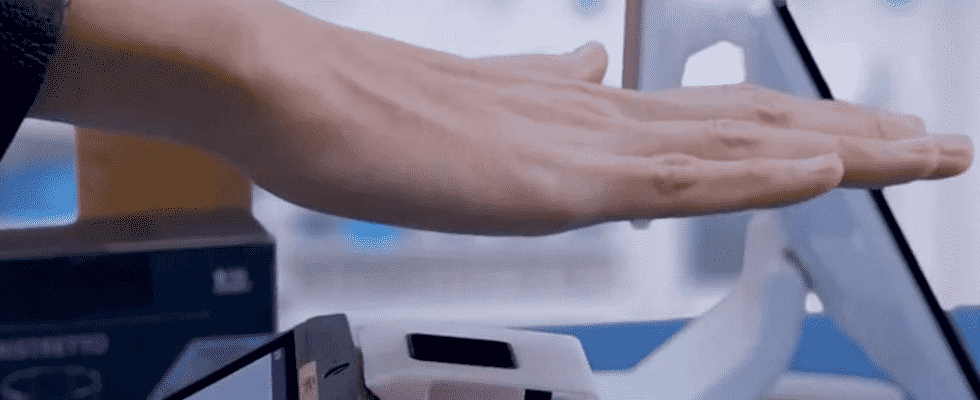Pay by simply using your hand, without any electronic gadget? This is the promise of Ingenico, specialists in payment solutions, which has developed an original biometric process using the veins of the palm.
The bank card has established itself, for several years now, as the means of payment par excellence, especially since contactless payment has become part of everyone’s daily life with the pandemic – where it has been promoted as a barrier gesture. in its own right – and raising the cap to €50 – a limit that could be raised to €80. This process has notably contributed to making checkouts more fluid and to simplifying the lives of its users. But as practical as it is, the bank card has some disadvantages since it is necessary from time to time to enter a secret code to validate the payment – which wastes time – and that malicious people can seize it – this which poses security problems.
Faced with this observation, the company Ingenico – specialist in payment terminals – has developed a new means of payment thanks to an original biometric technology. Its principle is particularly original: it is the veins of the palm of the hand that are used to identify a user, and thus to validate a transaction. A revolutionary idea, but not without risk.
Biometric payment: the promise of absolute security
In practice, it is enough to approach the palm of an infrared sensor NIR (Near Infra-Red), which analyzes the network of veins to identify the customer and validate the payment. No need to rummage through your wallet to find your bank card or enter a secret code. And even less to have a chip or an implant transplanted under the skin! In his press releaseIngenico promises a process that is easy to implement and use for merchants thanks to compatible terminals, the hand effectively replacing the bank card, thanks to a personalized association.
According to the company, biometric payment by the palm of the hand would reduce queues, speed up payments and, above all, limit the risk of fraud. “Because each person has a unique vein pattern in their palm, palm vein identification is one of the most accurate and secure biometric technologies in the world”, explains Michel Léger, Global Executive Vice President of Solutions Development at Ingenico. Because if the vein patterns are unique, it is impossible to steal them to take someone else’s identity and pay using their bank account.
But such technology has cause for some very legitimate concerns – before the pandemic, the majority of French people were reluctant to use contactless for security reasons. As they are unique in essence, biometric data has great value and could therefore be of great interest to hackers. Ingenico wants to be reassuring and explains that, once scanned, the image of the hand is encrypted, tokenized and linked to the customer’s payment card in its cloud environment. Moreover, it would be impossible to defraud by using photos of the palm of the hand because “Unique patterns under the skin are virtually impossible to replicate.” We can still fear a hacking of the database, as has already been the case for Aadhar, the Indian biometric database – the largest in the world – in 2018. Ingenico’s first tests should take place in North America. Europe will have to wait a little longer before benefiting from this new payment method. What to leave time for the European Parliament to legislate on the subject?
